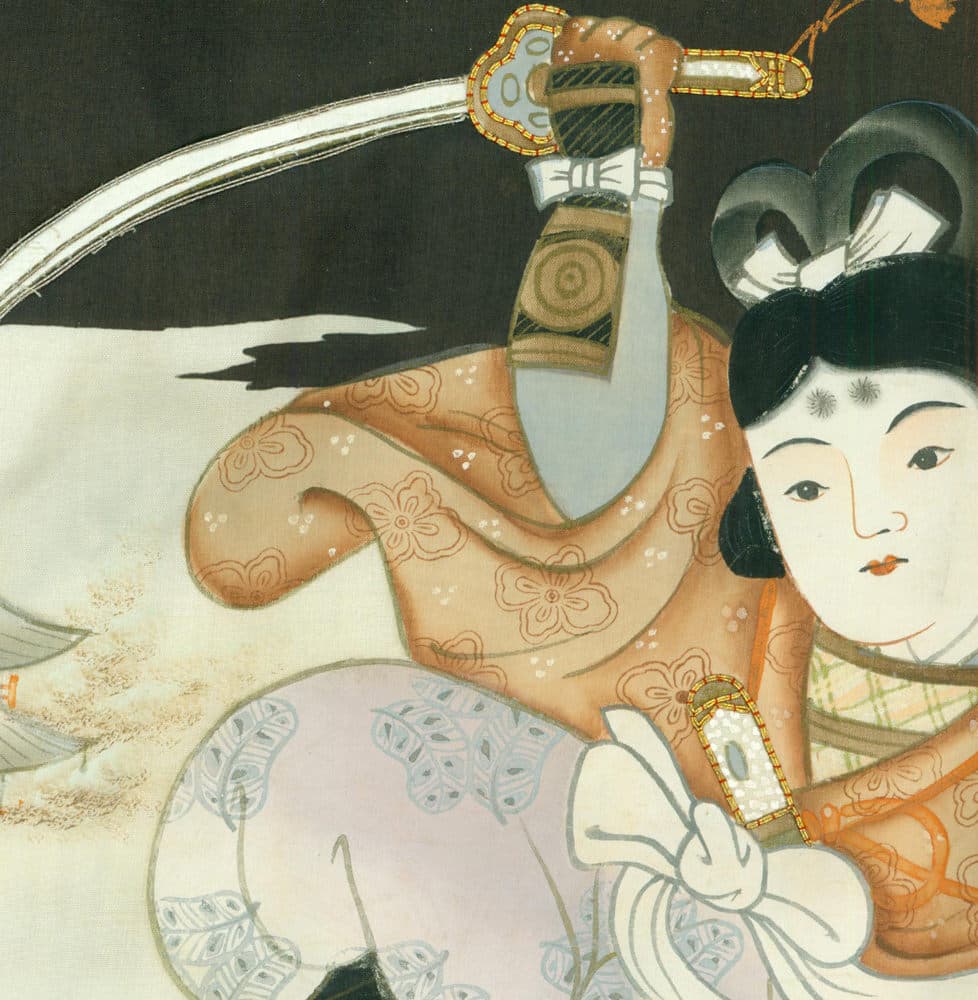The miyamairi silk kimono presents a painted and embroidered depiction of the famous battle between the legendary warrior monk Benkei and the youthful general Minamoto no Yoshitsune. This episode, set on Gojo Bridge in Kyoto, is one of the most enduring tales from the Heike Monogatari cycle and symbolizes the triumph of wit and agility (Yoshitsune) over brute strength and authority (Benkei). The boy’s kimono uses this heroic narrative as a protective and aspirational motif, wishing the child strength, intelligence, and future success.
The composition integrates the childlike human figures with a stylized natural setting—snow-covered mountains, pine trees, and a flowing river rendered with rhythmic, curving lines. The bold, almost graphic handling of the river and pine evokes design principles found in Rinpa aesthetics, where natural forms are distilled into decorative patterns with striking contrasts. At the same time, the figural rendering of Yoshitsune and Benkei reflects the pictorial realism of early 20th-century nihonga painting, which fused traditional brushwork with a sense of three-dimensionality and drama. Embroidery highlights emphasize details such as armor and weaponry, adding texture and depth while enhancing the celebratory nature of the garment.
By placing legendary heroes onto a ceremonial kimono for boys, the textile draws upon cultural symbolism tied to courage, loyalty, and perseverance. The scene not only connects the wearer to Japan’s heroic past but also frames the child’s initiation into society with ideals of valor and destiny, reinforcing the significance of the Shinto coming-of-age rite.
It measures 33 inches (84 cm) from sleeve-end to sleeve-end and stands at a height of 40 inches (102 cm).
.avif)







